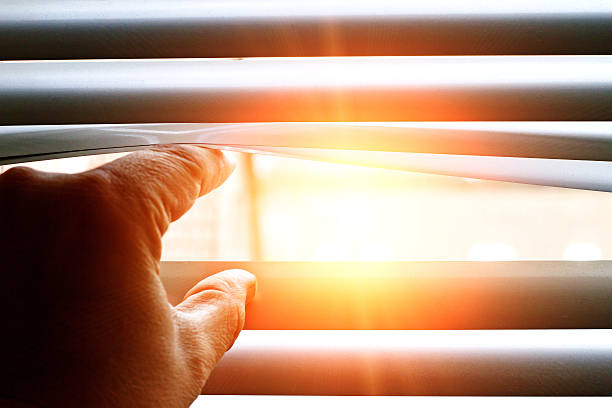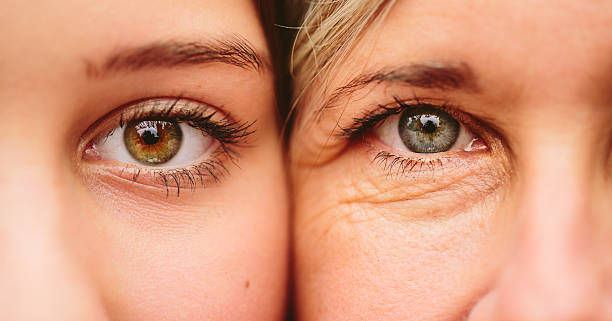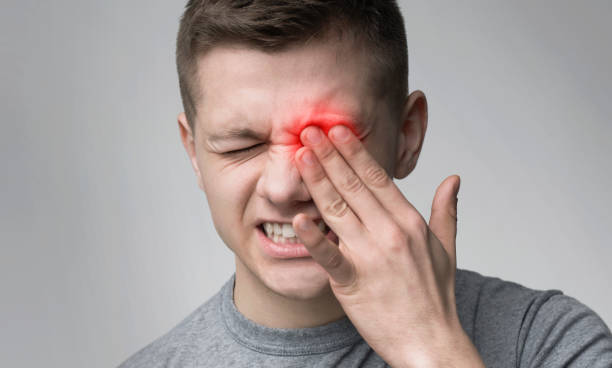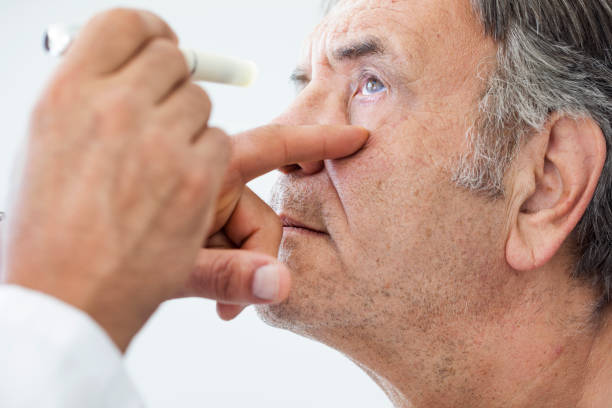
Laying out at the pool, building sandcastles on the beach, tossing a flying disc at the park — these are typical “fun in the sun” activities. But with all that fun you’re having, are you blinded to the dangers of sun exposure?
These are the top 5 eye conditions that can result from sun damage — and your options for treatment.
1. Aging

Ultraviolet (UV) exposure is responsible for 80% of visible signs of aging. UV rays are harmful to your skin, and they age you a bit more each day by creating new wrinkles, sun spots and looseness in the skin around your eyes.
In addition, squinting due to the sun can cause crow’s feet and deepen wrinkles. Wearing protective sunglasses designed to block UV rays helps to minimize further damage to the skin around the eyes and all ocular structures.
Consumers should look for ultraviolet (UV) lens protection that is UV400 or higher. This rating means that 99.9% of harmful UV rays are blocked by the lens.
UV sunwear will prevent sun damage to the delicate skin around the eye and decrease the likelihood of the occurrence skin cancer.
2. Corneal sunburn

The cornea is the clear outer covering of the eye and can be considered the “skin” of your eye. Just like skin can be sunburned so can the cornea.
A sunburn of the cornea is called photokeratitis. Some more common names for photokeratitis are welder's flash, snow blindness and arc eye. This is a painful inflammation of the cornea caused by unfiltered UV ray exposure.
As with most sun-related eye conditions, prevention involves use of proper UV protective sunwear.
3. Cataracts

Did you know that unfiltered UV exposure can cause or accelerate cataract development?
Cataracts are a clouding of the lens in the eye that can affect vision. While this eye condition is most commonly associated with aging, you can reduce your risk of developing cataracts by wearing proper UV-blocking sunglasses.
Cataracts that affect vision are typically treated with surgical removal of the lens. The clouded lens is replaced with an artificial lens that restores vision.
4. Pinguecula and pterygia

Pinguecula and pterygia are growths on your sclera (the white of your eye) due to excessive sun exposure.
A pterygium has the potential to spread onto the cornea and negatively impact vision while a pinguecula does not.
Wearing proper UV protection is the best preventative treatment for development of these topical growths.
If the pterygium affects vision surgical removal may be considered. If either growth causes irritation a topical lubricant is often prescribed.
5. Macular degeneration

The impact of ultraviolet radiation on the development of macular degeneration is not fully understood.
Macular degeneration involves the disruption of the macula, the central area of the retina, which is responsible for clear vision. Some studies suspect that age-related macular degeneration can be exacerbated by sun exposure.
Comprehensive eye examinations and protective sunwear can prevent the progression of this condition.
Is it possible to reverse sun damage?
Nearly all of these sun-related eye conditions can be treated in some way, alleviating the side effects if not reversing the process altogether.
It’s best to protect yourself from the sun and prevent the damage before it can start. The best way you can do that is to wear sunscreen with water-resistant, broad-spectrum coverage and an SPF of 30 or higher, UV-blocking sunglasses and a wide-brimmed hat each time you go outside.
Credits to the original article and author: https://www.allaboutvision.com/conditions/sun-damage-result/
